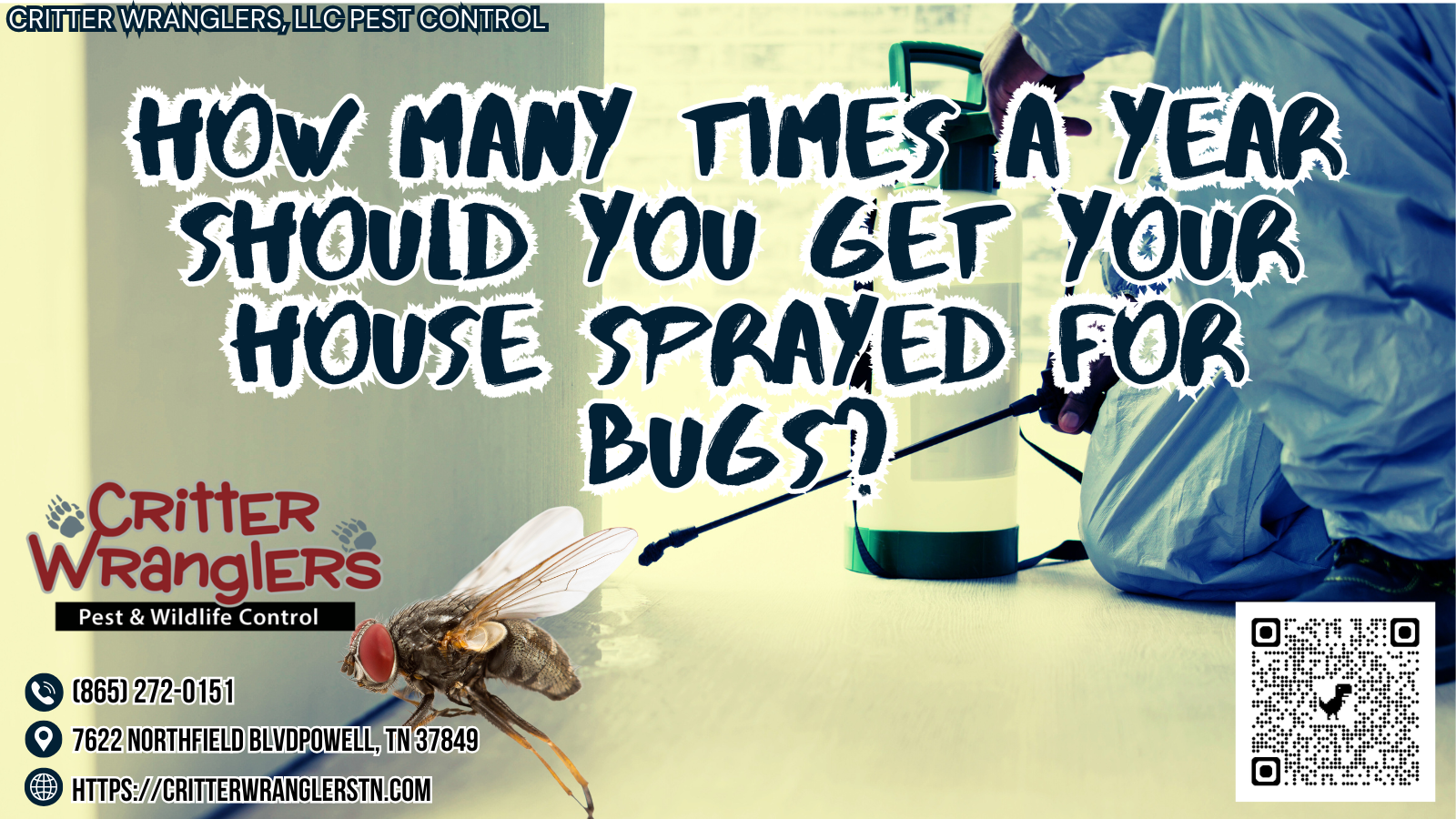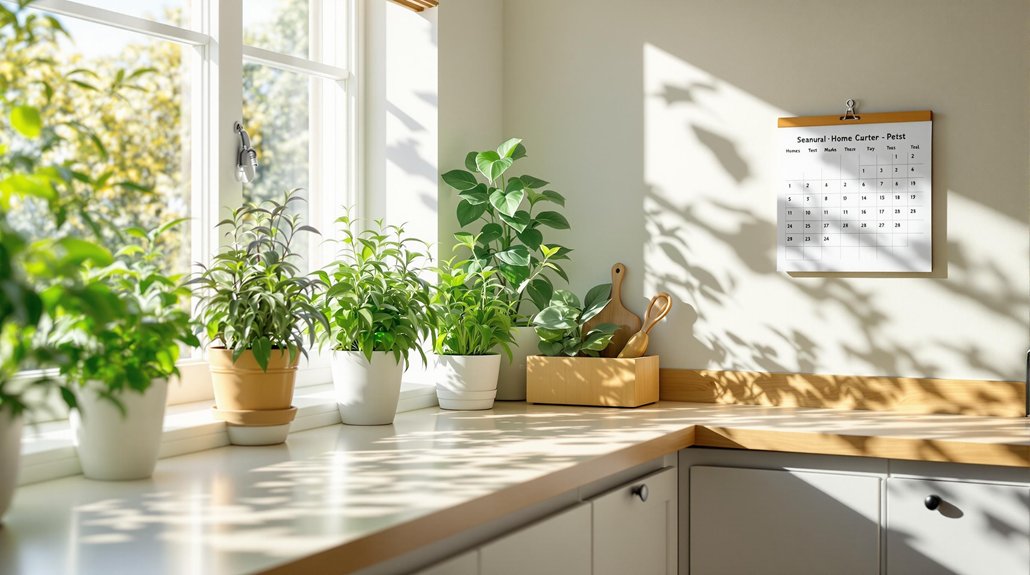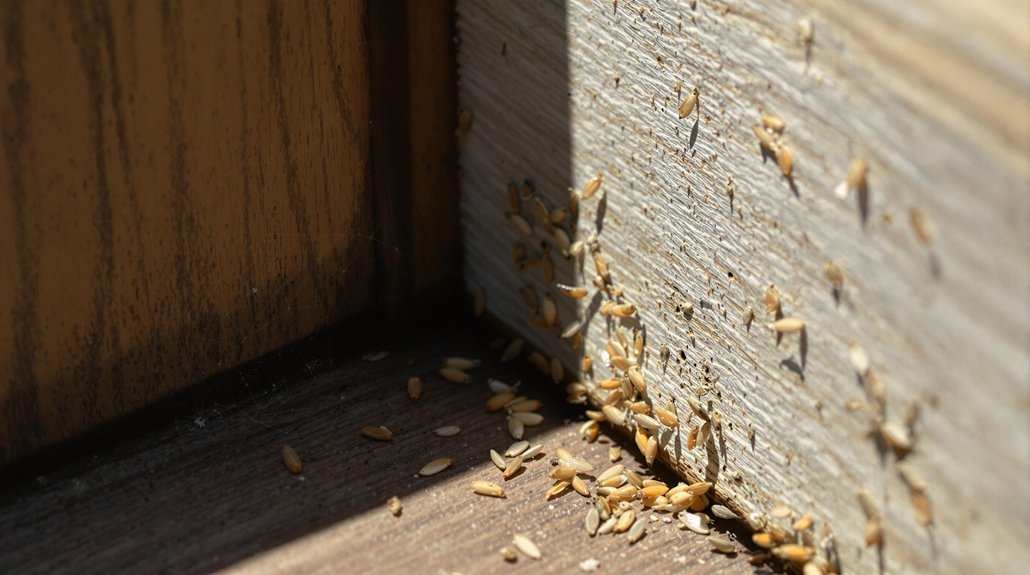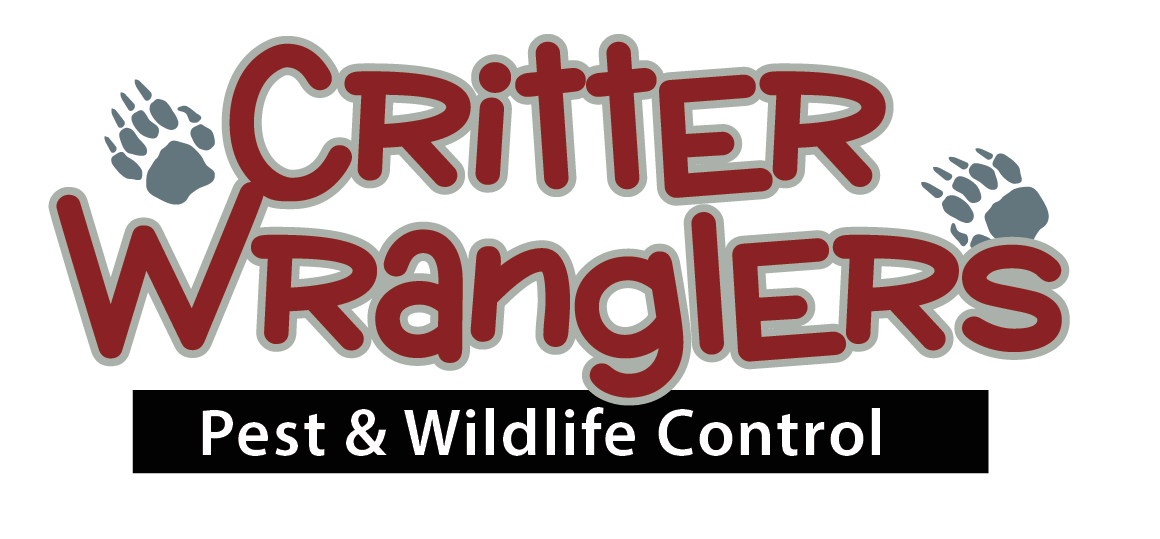Critter Wranglers, LLC Blog
Have an issue? Contact us today

How Many Times a Year Should You Get Your House Sprayed for Bugs?
Most homes should be sprayed for bugs at least four times a year. This quarterly schedule helps manage pests effectively, especially during peak activity seasons. In spring, pests start to emerge from hibernation, while summer brings increased warmth and pest populations. Fall is another critical time, as many pests seek shelter indoors. Regular inspections and treatments further enhance pest control efforts. It’s crucial to take into account factors like humidity and landscaping, which can impact pest presence. For a more thorough understanding of pest management, exploring additional strategies could be beneficial.
Key Article Highlights
- Quarterly inspections are recommended to identify potential pest issues before they escalate into infestations.
- Seasonal treatments should be applied during peak pest activity in spring and fall to prevent infestations.
- High humidity levels may require more frequent treatments, especially for pests like cockroaches that thrive in moisture.
- Cost considerations vary; specialized treatments for different pests may necessitate different frequencies.
- Regular maintenance schedules enhance home health and keep pest populations under control throughout the year.
Understanding Pest Types
Understanding the various types of pests that can invade your home is essential for effective pest control. Common household pests include ants, cockroaches, termites, and rodents. Each pest type requires different management strategies. To identify these pests, you can use pest identification techniques such as visual inspection, monitoring traps, and studying droppings or damage signs. Recognizing the specific pest is vital, as it informs the choice of treatment and prevention methods. For example, termite control differs markedly from dealing with a rodent infestation. By mastering pest identification techniques, you can better protect your home and create a targeted approach to pest management. This knowledge empowers you to take proactive steps, ensuring a pest-free living environment.
Seasonal Pest Activity
Seasonal pest activity can greatly impact the effectiveness of your pest control efforts. Understanding pest migration patterns and seasonal weather impacts is vital for maintaining a pest-free home. Different pests thrive at various times of the year, and their activity levels can change with the seasons.
Here are three key seasonal trends to reflect upon:
- Spring: Many pests emerge from hibernation, increasing their presence in homes.
- Summer: Warm weather prompts higher activity levels, leading to potential infestations.
- Fall: Pests seek shelter indoors as temperatures drop, making treatments essential.
Home Environment Factors

While various seasonal factors influence pest activity, the home environment also plays an essential role in attracting or repelling unwanted insects. Indoor humidity is a significant factor; high levels can create a perfect breeding ground for pests like cockroaches and mold. To maintain a pest-free home, it is vital to control moisture through proper ventilation and dehumidifiers. Additionally, outdoor landscaping can impact pest presence. Overgrown shrubs and standing water can attract insects, while well-maintained gardens can deter them. Regularly trimming plants and ensuring proper drainage are effective strategies. By managing indoor humidity and outdoor landscaping, homeowners can create an environment less conducive to pest infestations, ultimately reducing the need for frequent pest control treatments.
Regular Maintenance Schedule
To effectively manage pest populations, implementing a regular maintenance schedule is key. This schedule not only helps in controlling pests but also enhances the overall health of your home. Here are three essential components of a successful maintenance schedule:
- Quarterly inspections: Regular checks can identify potential issues before they escalate.
- Seasonal treatments: Applying preventive measures during peak pest seasons can greatly reduce infestations.
- Follow-up visits: Scheduling follow-up services guarantees that any remaining pests are addressed quickly.
Signs You Need Spraying

How can you tell if your home needs pest spraying? Recognizing signs of pest infestations is vital for timely action. Look for the following indicators:
| Sign | Description | Action Needed |
|---|---|---|
| Droppings | Small feces near food sources | Immediate inspection needed |
| Nests | Visible nests in corners | Schedule spraying |
| Damaged furniture | Chewed wood or fabric | Evaluate and treat |
| Strange sounds | Noises at night | Investigate further |
| Visible pests | Bugs seen during the day | Implement preventive measures |
If you notice these signs, it’s important to act quickly. Ignoring them can lead to larger pest infestations, making preventive measures essential for maintaining a pest-free home.
Professional vs. DIY Treatments
Choosing between professional pest control services and DIY treatments can be challenging, as each option has its own advantages and drawbacks. Understanding these can help you make an informed decision.
- Professional Methods: These often involve trained experts using advanced tools and techniques, ensuring thorough pest removal.
- DIY Options: These offer flexibility and cost savings, allowing homeowners to tackle minor infestations on their own.
- Effectiveness: Professionals generally provide long-lasting solutions, while DIY methods may require frequent reapplication.
Cost Considerations
When considering bug spray treatments, cost is an important factor. The frequency of treatments can greatly affect overall expenses, especially with seasonal pest variations. Understanding these costs can help homeowners make informed decisions about pest control.
Treatment Frequency Costs
Cost considerations for treatment frequency play a crucial role in pest control decisions. When planning your budget, it’s important to evaluate various treatment options and their associated costs. Here are three key factors to contemplate:
- Frequency of Treatments: More frequent treatments typically lead to higher costs. Determine how often you need services based on pest activity.
- Type of Pests: Different pests may require specialized treatments, which can vary in price. Assess the specific pests in your home.
- Service Provider Rates: Research various pest control companies; their rates may differ widely. Compare services to find the best value for your needs.
Effective budget planning guarantees you can maintain a pest-free home without overspending.
Seasonal Pest Variations
Understanding seasonal pest variations is important for effective pest control planning. Different pests have unique migration patterns influenced by seasonal weather impacts. For example, warmer temperatures in spring can lead to an increase in ants and termites, while colder months may see a rise in rodents seeking shelter. Recognizing these patterns helps homeowners anticipate pest issues and plan treatments accordingly.
Cost considerations also play a role; scheduling treatments during peak pest seasons can prevent infestations and reduce long-term expenses. Regular inspections during these times can identify early signs of trouble. By aligning pest control efforts with seasonal variations, homeowners can guarantee their strategies are timely and cost-effective, ultimately leading to a pest-free environment.
Frequently Asked Questions
What Are the Long-Term Effects of Frequent Pest Spraying?
Frequent pest spraying can lead to pest resistance development, reducing the effectiveness of treatments. Additionally, chemical accumulation risks may pose environmental and health concerns, necessitating careful consideration of pest control strategies and their long-term implications.
Can Pets Be Affected by Bug Spraying Treatments?
Like a watchful guardian, pet safety remains essential during bug treatment. Many pesticides can pose risks to pets, so it’s vital to follow guidelines, ensuring their safety while effectively managing pest populations in your home.
How to Prepare My Home Before Spraying?
Preparing your home for spraying involves several steps. First, utilize cleaning tips to remove clutter. Next, rearrange furniture to allow access to all areas. This guarantees effective treatment and minimizes the risk of pest resurgence.
Are Certain Pesticides Safer Than Others for Indoor Use?
Imagine choosing a gentle stream over a raging river. Similarly, natural pesticides offer a safer alternative for indoor safety, minimizing harmful effects while effectively managing pests. Always prioritize products that guarantee both efficiency and health protection.
What Should I Do if I See Pests After Treatment?
If you notice pests after treatment, first conduct pest identification to determine the species. Then, consult your pest control professional to discuss treatment timeline adjustments and potential additional measures to address the ongoing infestation effectively.
